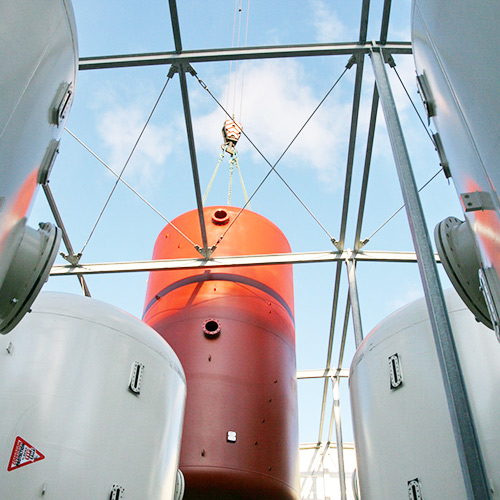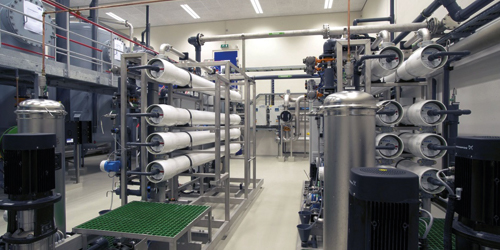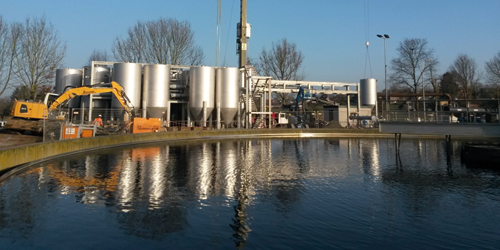Sand and media filtration is a commonly applied technology for the removal of suspended substances from water and is frequently used for drinking and process water production, in wastewater treatment and swimming pool treatment.
Sand filtration is quite often also used for source water purification for iron, manganese and ammonia removal. In a sand filter, together with the filtration of suspended substances, there are often also biological processes taking place, such as the conversion of ammonia in nitrate.
Sand filtration can be considered as a conventional counterpart to membrane filtration technologies like micro- and ultrafiltration.
Often, different media are combined. For example, a combination of sand with anthracite is quite often applied. The two media are located in separate layers in the filter.
Advantages of sand filtration:
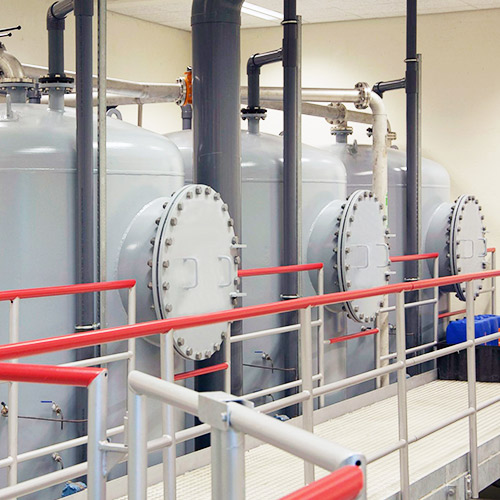
Continuous sand filtration
Continuous sand filtration is a separate subject. With this, the filter does not have to be rinsed regularly. The production will therefore not be interrupted. The construction is entirely different than that of a conventional sand filter. The principle is different: the bed does not sit still, but slowly moves, whereby all the filter sand gradually passes a washer and will be rinsed in this way.
Advantages of continuous sand filtration:
Operation discontinuous sand filtration
The filter bed consists of one or more layers of sand or another filter medium. The layers have a different grain size and similar mass and are separated. Suspended substances in the raw water that are larger than the space between the sand grains will be held back by the filter bed. Due to cake filtration and waste accumulation between the grains, much smaller particles are usually also held back.
The sand filter bed is located in a filter kettle. The flow through the filter will normally be from top to bottom. When rinsed, the flow through the filter runs upwards. The loosened waste will then be removed from the top of the filter.
With sand filtration, there is largely a physical separation on the basis of particle size. To a lesser degree, adsorption processes also take place. In addition, biological activity occurs in a sand bed, which can be both desirable and undesirable. Biomass, for example, that converts ammonium into nitrate is desirable. Biomass that converts methane is undesirable.
Over time, the pressure difference over the filter bed increased due to waste accumulation. The waste accumulation will be removed by hard back rinsing with water. Often, the water rinse will be combined with air purging to increase the effectiveness and to lower the water usage.
For the back rinsing, a rinse water supply and a rinse water pump in needed. Because the filter is out of production during a rinse, two filters engaged in parallel are often needed.
Backwash water reuse
RWB can apply ceramic membrane filtration for reuse of the sand filter rinse water. The concept offers an outstanding solution for the more efficient handling of water.
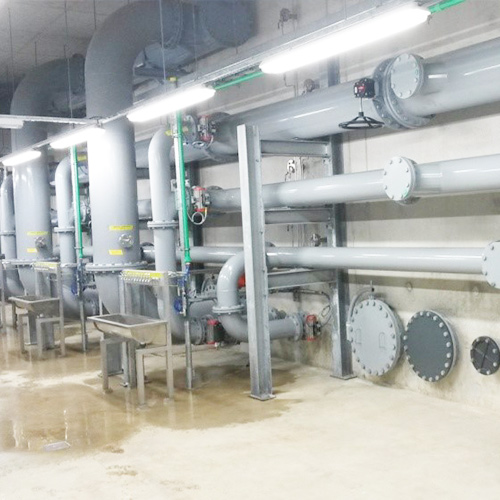
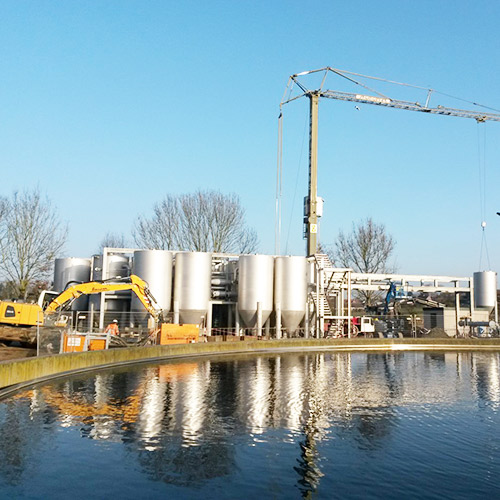
Continuous sand filtration
With continuous sand filtration, the raw water flows upwards through the filter bed, from a place low in the bed. At the same time, sand is pumped by means of a mammoth pump out from under the bed and over a sand washer, after which it ends up back on top of the filter bed. The filter bed therefore gradually moves down as a whole. There is thus a kind of counter flow.
The purified water leaves the filter from the top, by its own power.
By means of a set level difference, a small washing water stream continuously flows through the sand washer, which washes the passing sand clean. The fouled washing water also comes out of the top of the filter, under its own power.
For specific biological applications, the continuous filter will be fitted with, for example, a nutrients dosing and an elevated filter bed.
Experience RWB
RWB has delivered sand filter installations for the drinking water market and industry, both in the form of complete turn-key projects and in the form of standard installations of the company’s partner, Culligan.
The continuous sand filter is a special product of RWB. The filter is available in various standard sizes and kinds of materials. For special applications, the design can be modified.
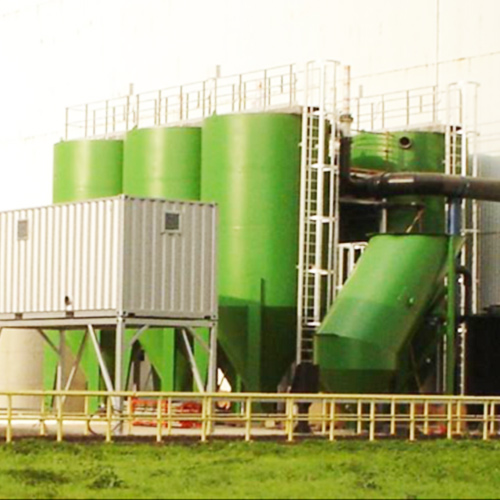
Realized projects
More information about sand filtration?
Feel free to contact us via the number below or use the contact form.



